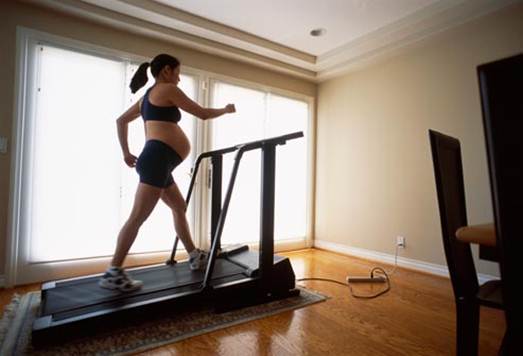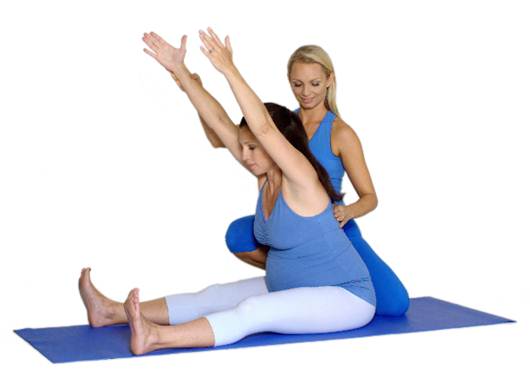Strength training is safe and one of the
best ways to minimize aches and pains. Weight machines are ideal, especially
for gym newbies, because they control your range of motion. “During pregnancy,
your joints get looser, and it’s easy to move outside of your normal range,”
says Jeffreys. However, if you’re accustomed to doing free-weight exercises,
you can continue.

During
pregnancy, your joints get looser, and it’s easy to move outside of your normal
range
Steer clear of any machine with a pad that
presses against your belly, such as the seated row machine or abdominal
machines. In addition, forgo any overhead lift, because this kind of motion can
increase the curve in your lower spine (aka hyperlordosis).
The strength routines at right target the
muscles that are key to reducing discomfort during pregnancy. Choose a weight
that allows you to perform the repetitions properly and comfortably and follow
the suggestions at right. After your first trimester, avoid any exercise done
while lying on your back.
Upper/middle back
Best machines: seated cable row, lat
pull-down pregnancy benefit: As your breasts get bigger, your shoulders round
forward. Strengthening the muscles between your shoulder blades helps
counteract the slump.
Chest
Best machine: seated chest-press pregnancy
benefit: Because you strengthened your back muscles in the previous move, you
need to work your pecs to keep your body in balance and avoid injury. And
because your breasts get bigger during pregnancy, keeping pectoral muscles
strong might also help prevent them from sagging.
Arms/shoulders
Best machines: biceps and triceps pregnancy
benefit: Strong arms. Soon you’ll be schlepping a baby, a diaper bag—and the
groceries.

Lower body
Best machines: leg extension and seated
leg-curl pregnancy benefit: Your quadriceps and hamstrings bear the weight of
your pregnancy as your belly grows.
Strength train at home
All you need are 2- to 5-pound dumbbells
and a chair. Do 1 or 2 sets of 8 to 12 repetitions for each exercise, choosing
a weight that is comfortable or simply using your body weight. Triceps overhead
extensions Lateral raises Biceps curls Squats
Core matters
A strong core is crucial for keeping back
pain at bay when you’re expecting, and you can perform this move at home or at
the gym, for as many weeks into pregnancy as you’re able.
To do a plank Get down on your hands and
knees, wrists directly under your shoulders. Lift your knees and straighten
your legs behind you until your body forms a straight line. Don’t arch your
back or let your belly sag, and keep your head in line with your spine. Hold
for 1 to 2 breaths, working up to 5 breaths.